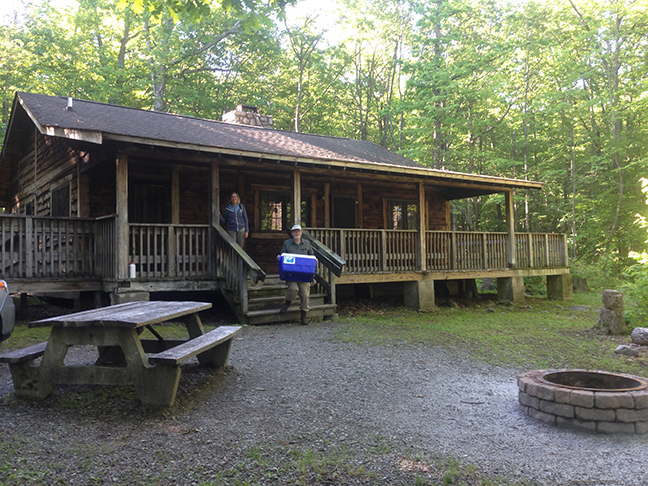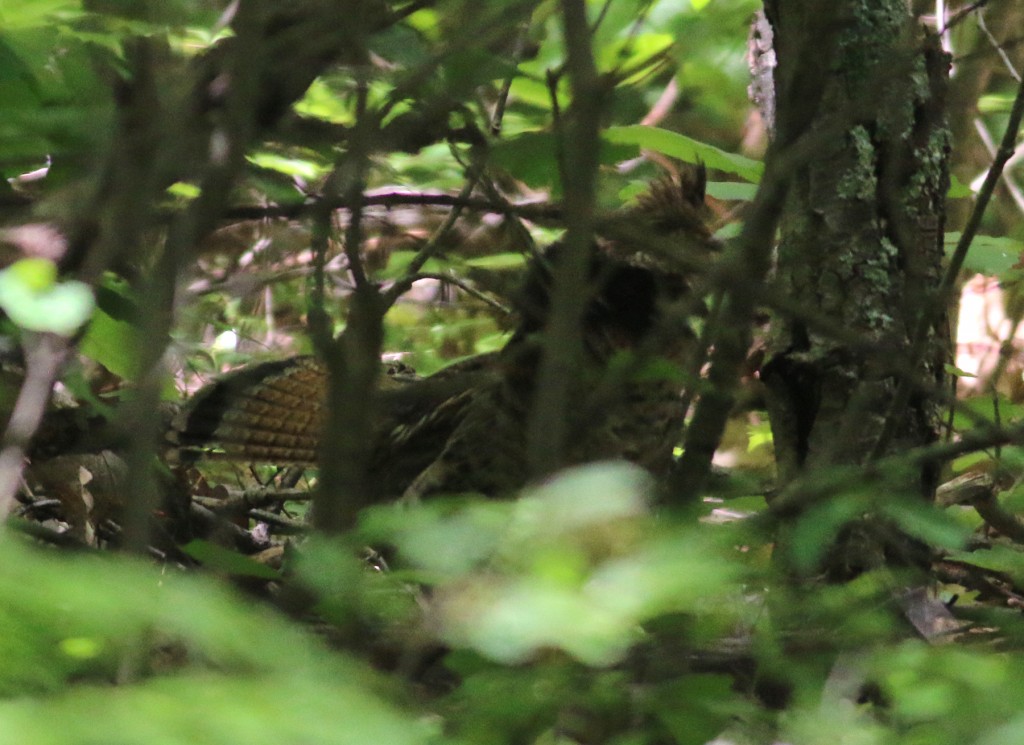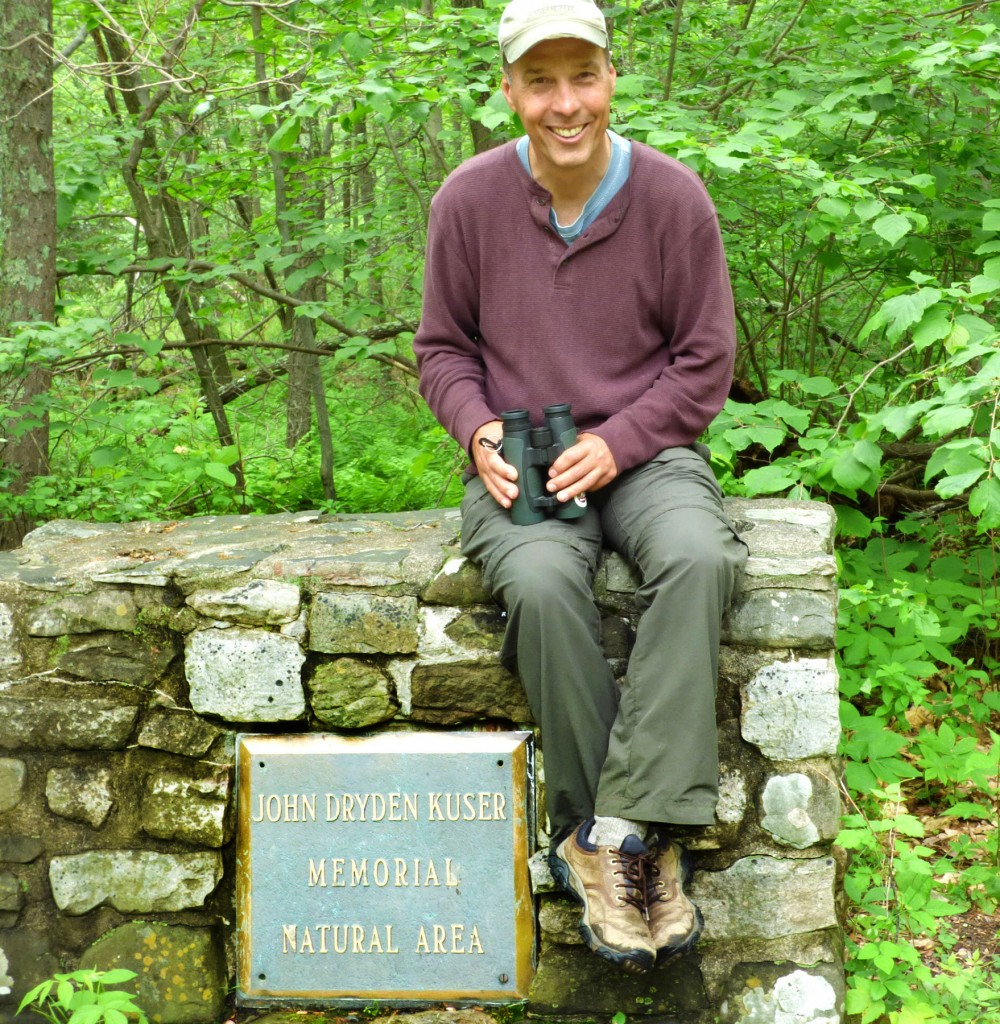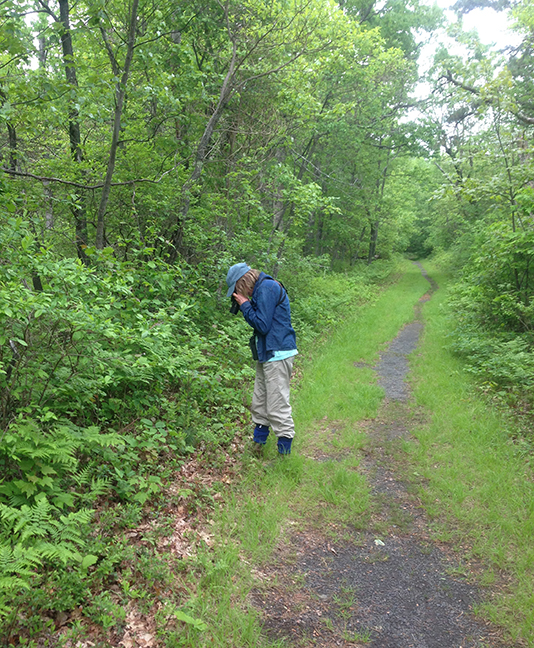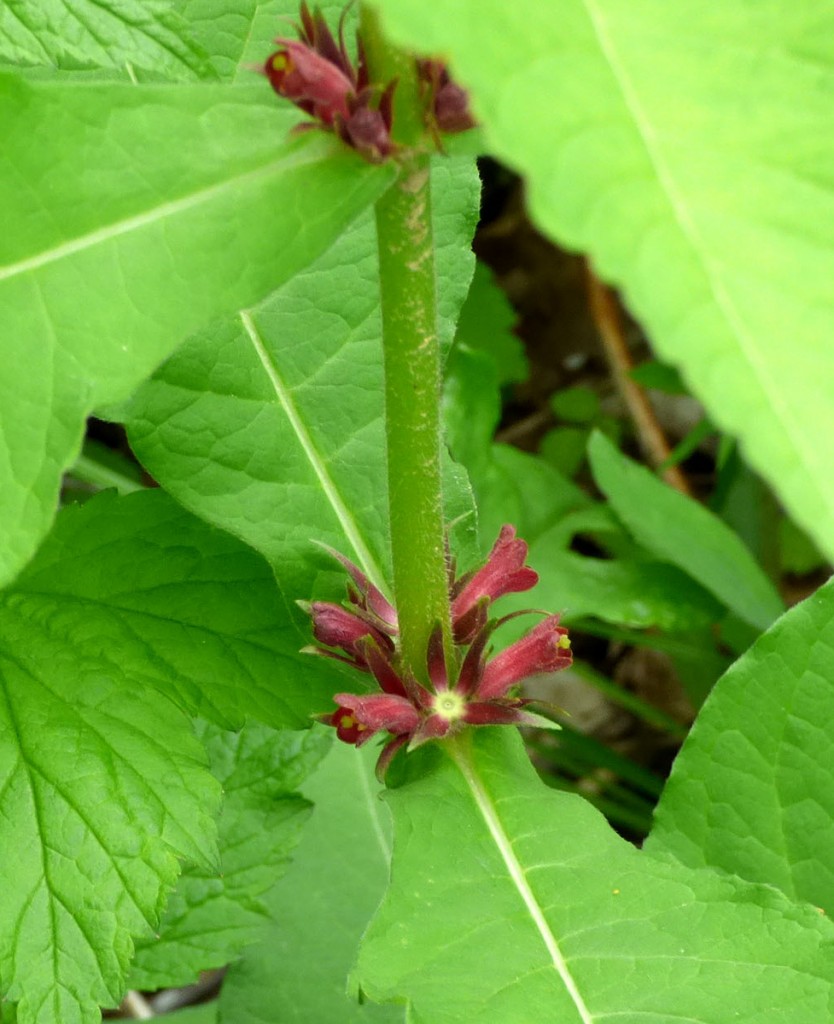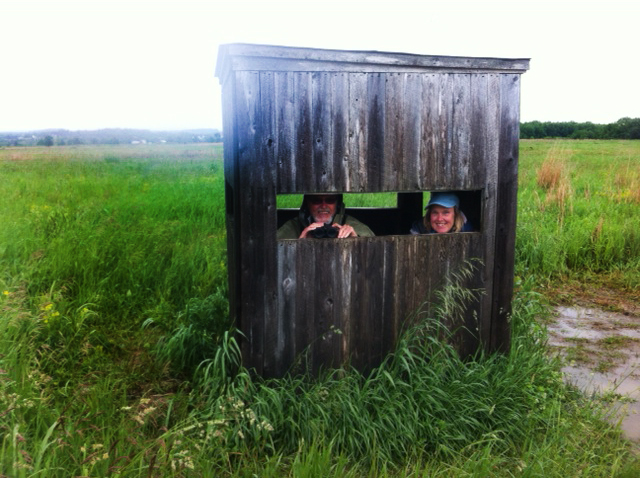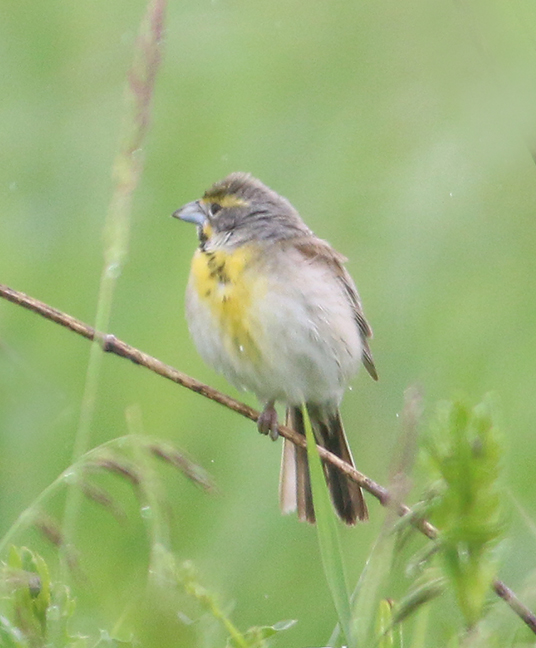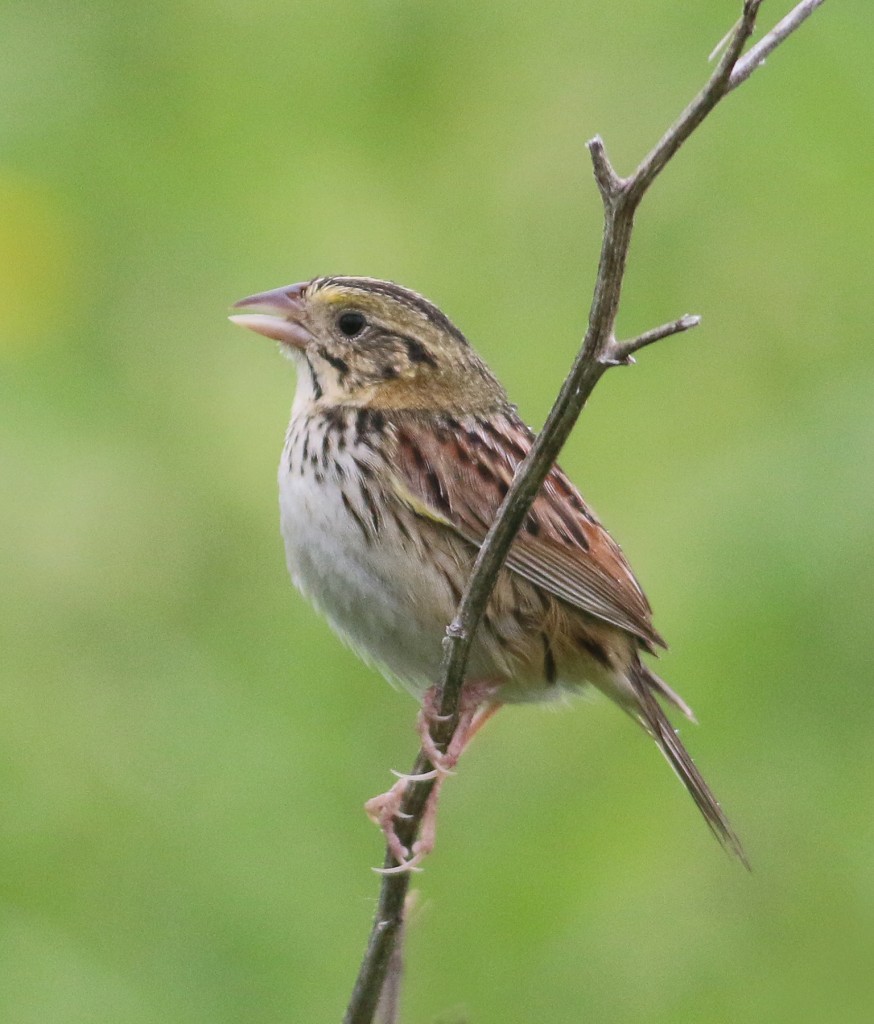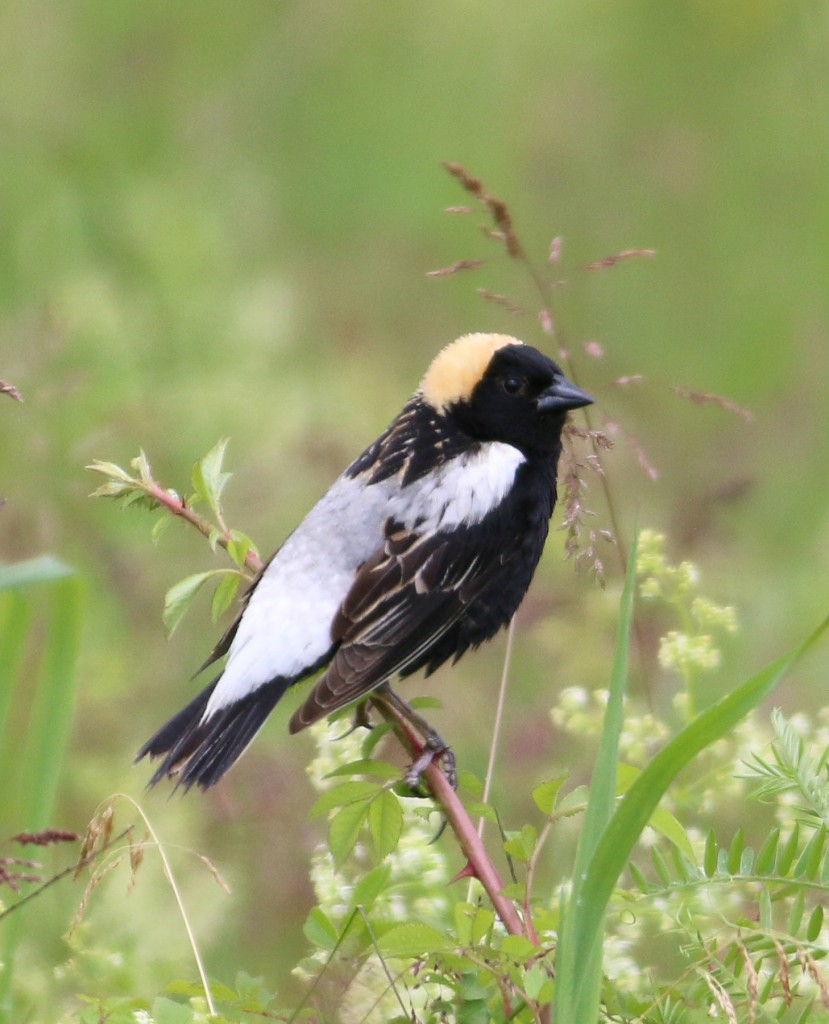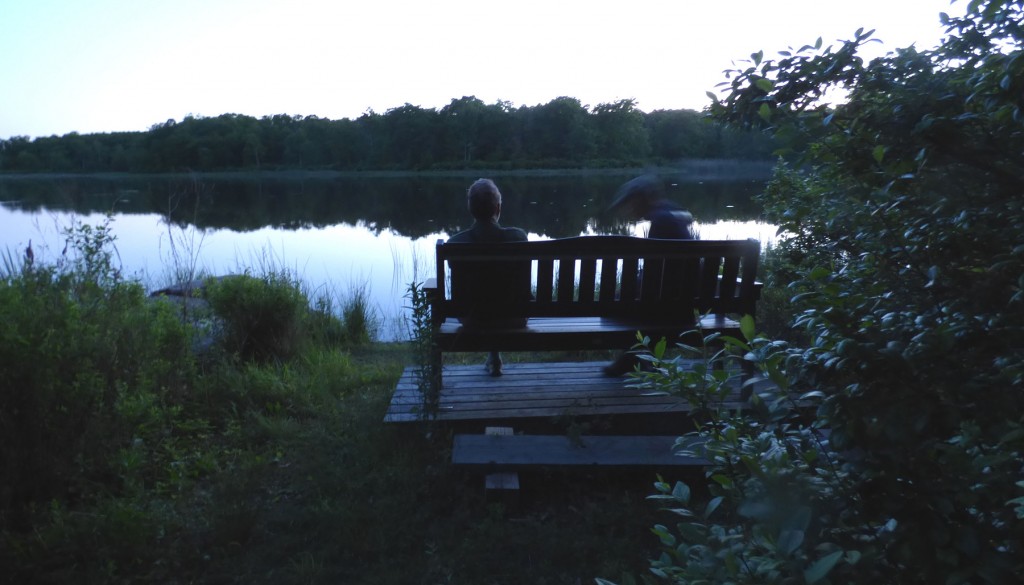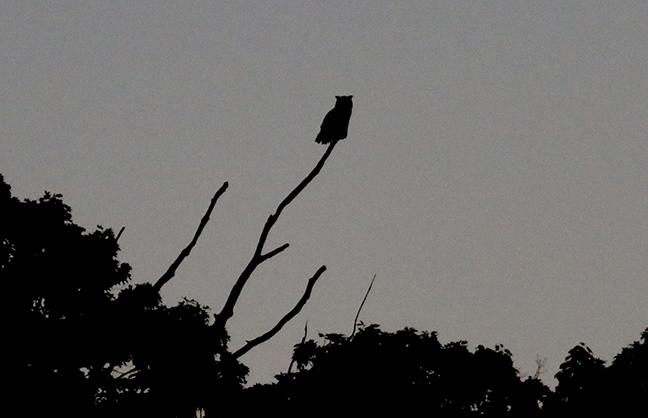This week Jeanine, Pete, and I headed upstate to search for birds that breed in the northwest highlands of New Jersey but not here in the southern part of the state. Our home for the past four days was a splendiferous cabin in High Point State Park. Let’s start with the cabin, a three-bedroom, five-bed home with a wood-burning stove, kitchen, picnic tables, firepit, and fully covered porch just 200 ft. from Steeny Kill Lake, located a short distance downslope from the High Point monument.
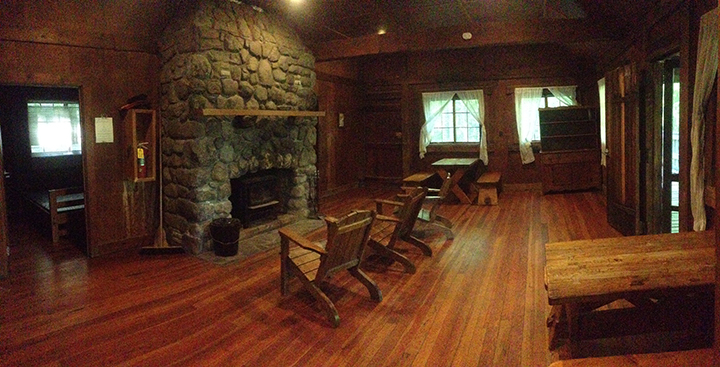
The interior of the cabin contained three bedrooms, an expansive living area with two tables and a wood-burning stove, a kitchen, and a spacious bathroom with a shower. Heavenly.

Pete and Jeanine on Mexican night at our cabin, featuring chips and salsa, beef and bean burritos, guacamole, rice, corn, and lemonade. Topped with a generous dollop of sour cream. And don’t forget the strawberry shortcake dessert. Yum yum. We ate very well on this trip.
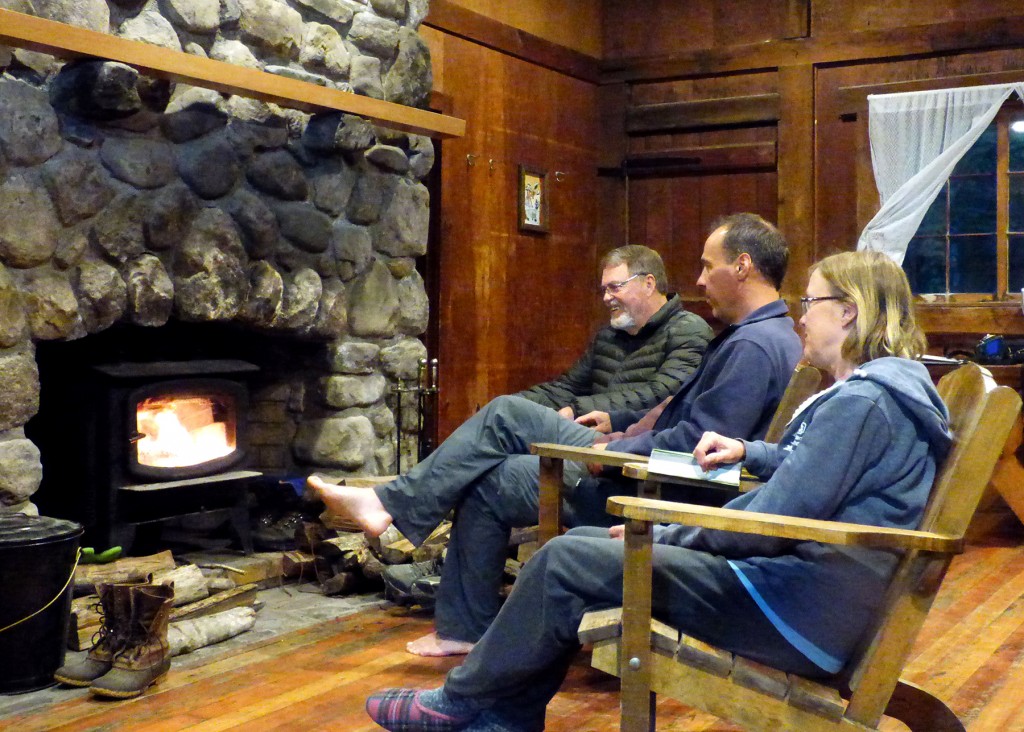
A trio of happy campers re-living the day’s adventures in front of the wood-burning stove. It was chilly this week, with nighttime temperatures dipping into the low 40s, so the warmth from the fire felt great.
We were greeted immediately by a pair of Eastern Phoebes nesting on the porch, singing Acadian and Least Flycatchers, and Yellow-throated Vireos, later joined by Cerulean Warblers. It was an excellent start. For the following three days we made stops along the major roads of both High Point State Park and Stokes State Forest and explored their side trails. The birding was good, as we were able to find breeding Yellow-bellied Sapsuckers, Brown Creeper, Blue-headed Vireo, and Louisiana Waterthrush, and multiple Cerulean Warblers that inhabit the neck-straining upper canopy. A highlight from Stokes was a great day strolling along the Big Flat Brook near the NJ School of Conservation, eating lunch on a hillside above the brook while being serenaded by Blackburnian and Black-throated Green Warblers. Also in Stokes, we happened upon a Ruffed Grouse crossing the road, followed by four chicks. The hen paused in the thick underbrush, waiting for the chicks, enabling a documentation shot.
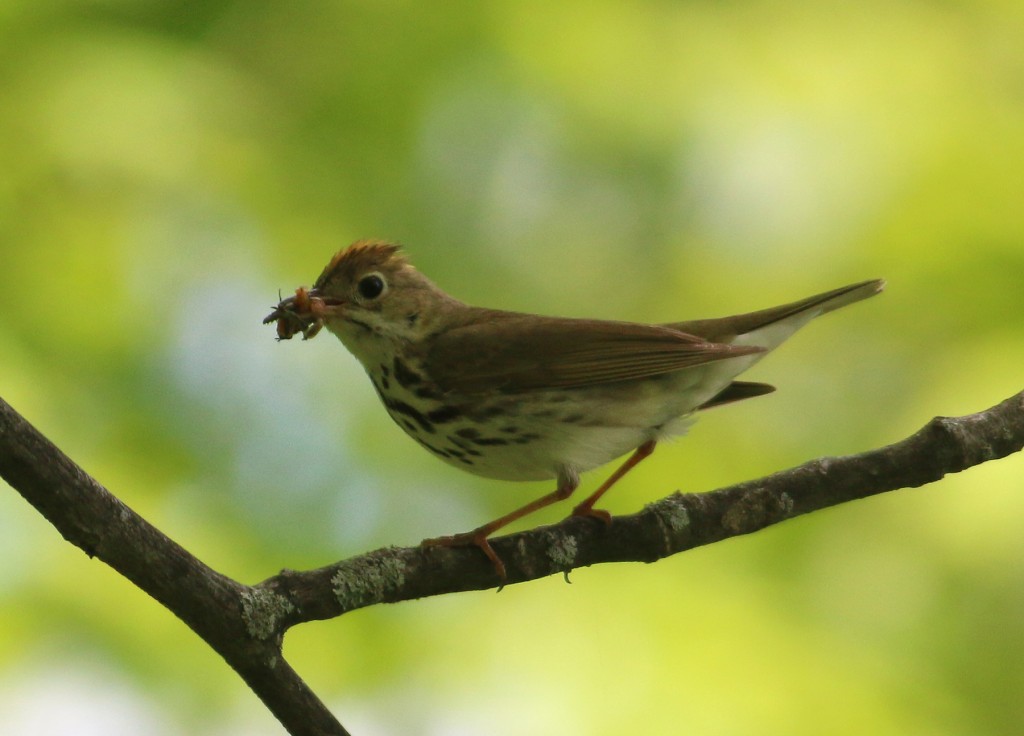
This Ovenbird was not pleased with us. Apparently we were close to its nest, and it wanted to bring food to its young.
Some rain was predicted on the second day, so we drove nearly an hour away and across the NY border, to the 600 acre Shawangunk Grasslands National Wildlife Refuge. The grasslands provided a pleasant contrast with the forest birding that we had been doing at High Point, plus a few great species were being reported there, and I wanted to see how the refuge had changed since it was modified a few years ago. The refuge was great. This site used to be a military airport (Galeville Airport), but the long-abandoned cement airstrips were removed, replaced with a nice trail that wound through and near the outskirts of the property, and a viewing platform, gazebo, and a few well-spaced blinds were installed. Overall, it was a great improvement. We were unsure of where our target birds were being sighted, which made it a daunting needle-in-a-grassland-haystack visit, but the birding gods were smiling upon us. We were about to give up at the first blind and move onto the more distant next one, when Pete stepped outside and said “I got it”. There just a few yards in front of us was a singing Dickcissel, bringing a smile to our faces.
The smiles were partly from seeing a Dickcissel, which I don’t see often enough, and partly because now we knew that our next target should be nearby. Indeed, a mere 25 yards or so away we heard a short wheezy hiccup ‘song’, and a sparrow popped up onto a stalk and continued its song. This was a Henslow’s Sparrow, a new life bird for me. Although Henslow’s are typically skulkers, this generous individual remained perched in sight and singing for at least five minutes, only a few yards away from the trail, giving ample opportunity for photos. This is cooperativity with a capital ‘C’.
The remainder of the refuge was a pleasure to walk through, with dozens of Bobolinks calling and flying back and forth, Eastern Meadowlarks popping up occasionally, infrequent Grasshopper and Savannah Sparrows singing and flitting about, and two pairs of American Kestrels hunting near their nest boxes.
After returning back to the cabin and finishing dinner on our final evening, we took the two-minute walk to the lakeshore and sat on ‘our’ bench. On the opposite shore a Great Horned Owl perched on a tall snag, providing a fitting finale to the evening and to the adventure.
